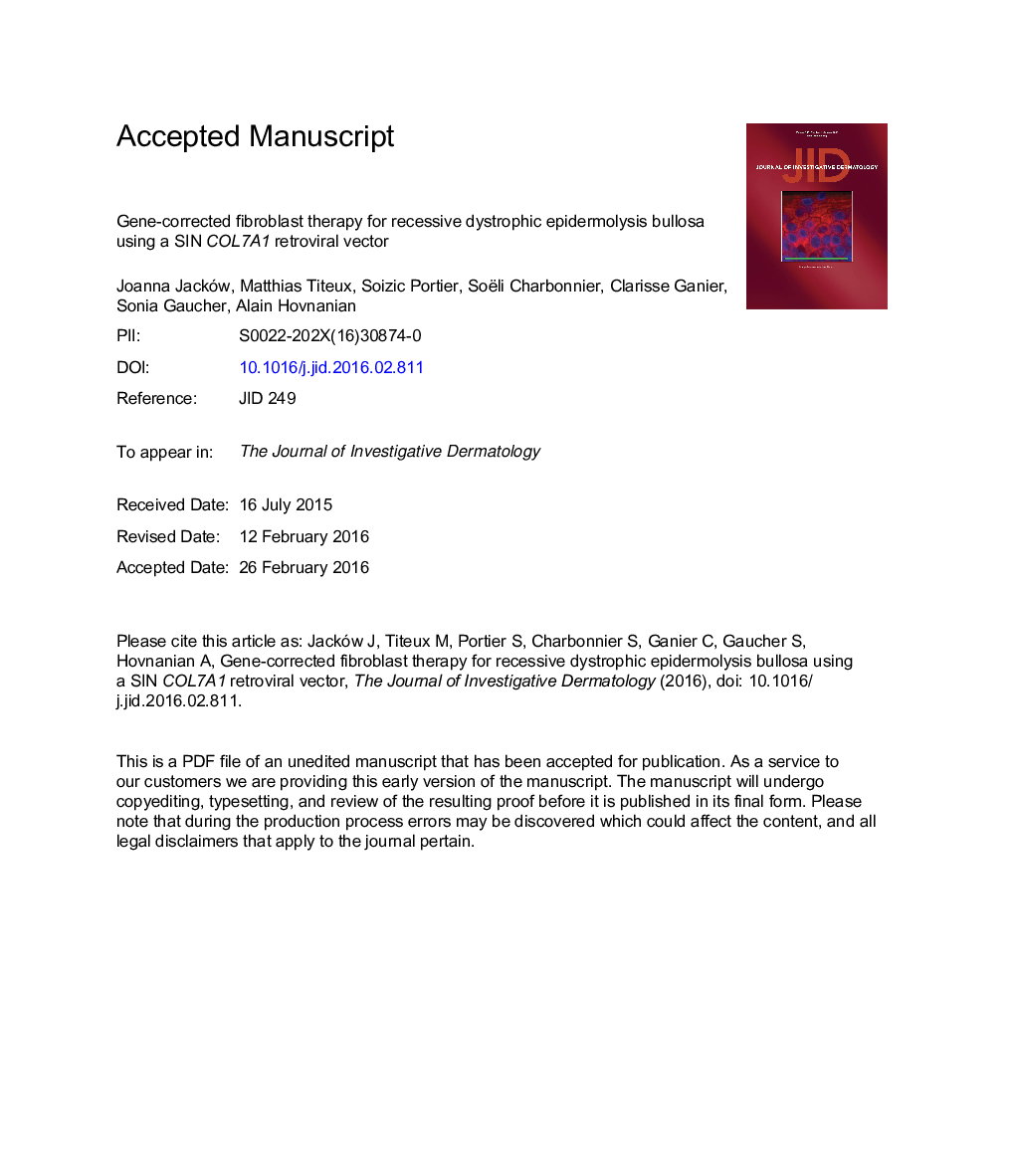| Article ID | Journal | Published Year | Pages | File Type |
|---|---|---|---|---|
| 6074333 | Journal of Investigative Dermatology | 2016 | 31 Pages |
Abstract
Patients with recessive dystrophic epidermolysis bullosa (RDEB) lack type VII collagen and therefore have severely impaired dermal-epidermal stability causing recurrent skin and mucosal blistering. There is currently no specific approved treatment for RDEB. We present preclinical data showing that intradermal injections of genetically corrected patient-derived RDEB fibroblasts using a Good Manufacturing Practices grade self-inactivating COL7A1 retroviral vector reverse the disease phenotype in a xenograft model in nude mice. We obtained 50% transduction efficiency in primary human RDEB fibroblasts with an average low copy number (range = 1-2) of integrated provirus. Transduced fibroblasts showed strong type VII collagen re-expression, improved adhesion properties, normal proliferative capabilities, and viability in vitro. We show that a single intradermal injection of 3 à 106 genetically corrected RDEB fibroblasts beneath RDEB skin equivalents grafted onto mice allows type VII collagen deposition, anchoring fibril formation at the dermal-epidermal junction, and improved dermal-epidermal adherence 2 months after treatment, supporting functional correction in vivo. Gene-corrected fibroblasts previously showed no tumorigenicity. These data show the efficacy and safety of gene-corrected fibroblast therapy using a self-inactivating vector that has now been good manufacturing grade-certified and pave the way for clinical translation to treat nonhealing wounds in RDEB patients.
Keywords
Related Topics
Health Sciences
Medicine and Dentistry
Dermatology
Authors
Joanna Jacków, Matthias Titeux, Soizic Portier, Soëli Charbonnier, Clarisse Ganier, Sonia Gaucher, Alain Hovnanian,
